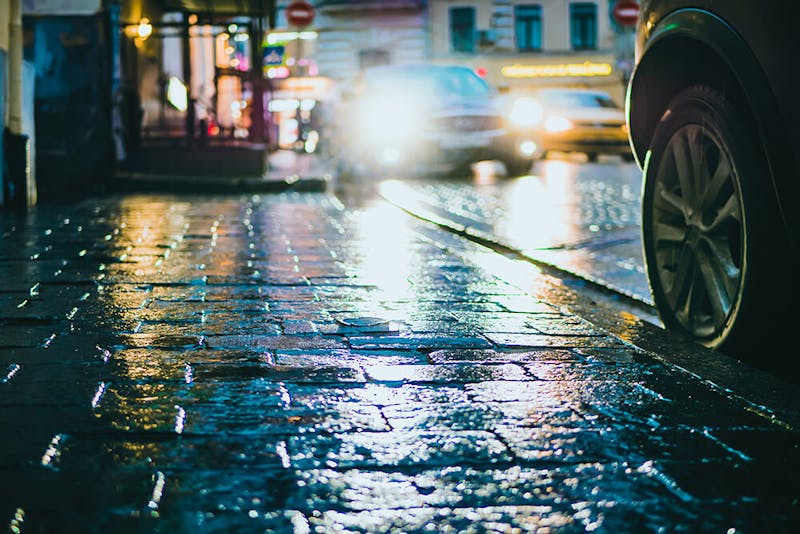
Driving at night can be harder than the daytime—it’s dark, there might not be streetlamps to help you see, and the other cars’ headlights could cause a glare. This is frustrating because headlights are necessary at night, but sometimes they just seem too bright.
In theory, the brighter the headlights, the better you can see the road, but that’s not true for everyone. If your headlights are too bright, they could cause a glare for other drivers, or even yourself. As a driver, it’s frustrating, and can sometimes be dangerous, when headlights cause a glare at night.
Those glares in the worst cases could cause a car accident, pedestrian accident, or any other kind of motor vehicle collision because your sight’s temporarily impaired. That’s why you need to know how to avoid the glare from oncoming headlights at night as best as possible.
Reducing Headlight Glare When Driving at Night
Even with great vision, or corrected vision, driving at night is challenging. It presents a new scope of difficulties, as you’re not only looking out for all the regular hazards on the road, but you’re doing so while it’s much harder to see and keeping your eyes from falling victim to headlight glare.
If you end up looking at headlights of oncoming traffic for too long, you could get problems with your vision. Bright spots, clouded vision, and other visual obstructions could take a while to pass from sight—all while you’re still behind the wheel of a motor vehicle. Driving is dangerous enough, but when glaring headlights get involved, they can cause even more trouble.
Here are tips to avoid glare from headlights of an approaching car:
- Don’t look directly at the headlights of oncoming traffic
- Avert your eyes to the lane in front of you, keeping them to the right of the lane but still focusing on the road
- Use lane reflectors to guide your path on the road, as it may become harder to see from the bright headlights
- Use the night setting on your rearview mirror by pulling the lever on it
- Don’t look directly into your rearview or sideview mirrors if the glare is coming from them
- Keep the interior lights off in your vehicle while driving at night
- Clean your wiper blades and windshield so there isn’t dirt that the light could make cloudy or reflective
- Get anti-glare glasses if you wear corrective lenses
- Take a break so your eyes can rest if the glares become overwhelming
- Don’t turn on your high beams to cause the same glare for the other driver as revenge
All these actions are intended to keep you as safe as possible while avoiding the glare of headlights from someone else on the road, whether they’re approaching you head-on or behind you. It can be difficult to continue to drive your car when it’s dark and headlights are hurting your eyes, so asking someone else to drive or avoiding driving at night as much as possible are two other potentially viable options.
The most important thing to remember is that you’re behind the wheel and in control of a large vehicle travelling at a high speed. Be careful and stay as vigilant as possible so that you can avoid a crash at all costs.
How To Keep From Causing Glare for Other Drivers
Since you know how annoying headlight glare is from your side of the road, it’s important that you’re a considerate driver and keep your headlights from blinding other drivers as well. Here are some ways you can ensure your headlights aren’t doing the same damage to others that you hate to see when you’re behind the wheel:
- Get your headlights aligned—they could blind you and other drivers if they’re not properly aligned
- Keep your headlights clean so they’re as clear as possible
- Don’t use your high beams unless necessary and don’t use them around other drivers
Doing your due diligence to prevent other drivers from having a tough time seeing at night can be the difference between a safe drive home and an accident. Keeping your headlights clean and your entire car serviced can help with that.
Have Headlights Gotten Brighter?
Often, drivers complain that headlights seem brighter than they used to be, and they’re not wrong. Many newer cars have LED headlamps compared to the past when they were just regular bulbs. These LED lamps, easily spotted by their bluish hue, seem to shine through space and time, or at least straight into other drivers’ retinas.
Older headlights, or halogen bulbs use more energy from the car, and have a yellowish shine, even when they’re clear. The warmer range of light is easier on drivers’ eyes, but it doesn’t illuminate as much as LED lights might.
LED headlamps are considered more efficient because they use less power, and their white-blue beams illuminate much farther ahead and wider to the sides of the road. Unfortunately, the tradeoff is blinding other drivers.
In 2018, the National Highway Traffic Safety Administration (NHSTA) saw this problem happening and proposed a new rule. In this rule, they propose that moving forward, cars are manufactured with adaptive driving beam (ADB) technology. This would modify headlights so that they are still giving the driver more visibility in front of them without causing glare for the other vehicles around them.
One of their reasonings was the quantifiable evidence that LED headlights are increasing glare and directly causing more accidents. In this proposal they stated that pedestrian deaths at night increased by 56% from 2009 to 2016, a time period when newer cars were using LEDs.
If the ADB systems are implemented, they could reduce headlight glare at night and save lives.
McMath Woods P.A. Is Here for You
If you’ve been in a car accident, or another kind of collision, that was caused by headlight glare, not only are you dealing with your injuries and damages, but you’re likely also frustrated. At McMath Woods P.A., we understand this frustration.
We are here to help you through your claim and hold the other driver responsible for what they’ve caused you. Reach out to our office today so we can schedule a free consultation for you right away.

